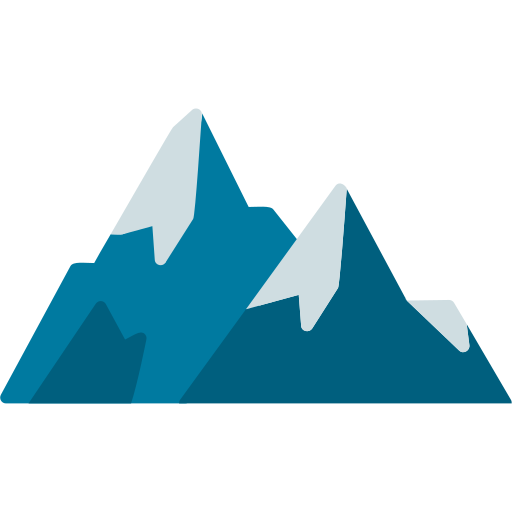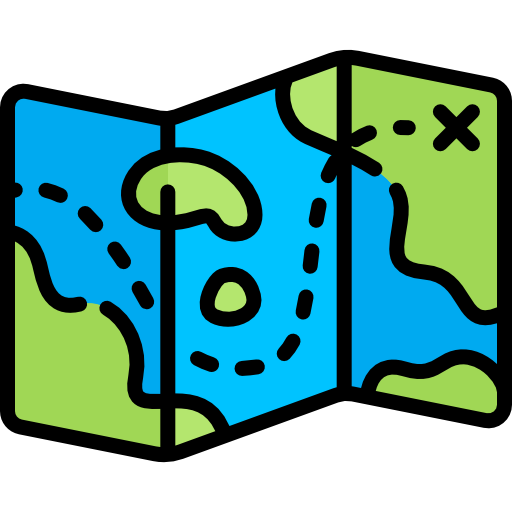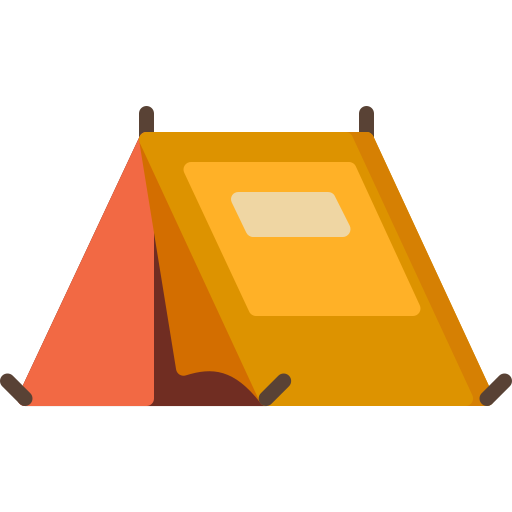Bhrigu Lake Trek
/ Per Person

Altitude :
4267 m

Duration:
3 Days

Trek Length
29 Km

Base Camp:
HimachalGulaba

Trek Difficulty :
Easy

Altitude :
4Himachal

Duration:
3 Days

Trek Length
29 Km

Base Camp:
Himachal

Trek Difficulty :
Easy
Overview
The alluring Bhrigu Lake is nestled at a height of 4,267M in Kullu district, Himachal Pradesh. In the long list of alpine lake treks, Bhrigu Lake is considered to be one of the shortest and most approachable lake treks of the Himalayas. In Bikat Rating Scale, Bhrigu Lake trek falls under level 2, which is to say it is fairly easy and ideal for first-time trekkers. So, if you are planning to try trekking for the first time, Bhrigu Lake is a safe bet.
The name of this divine lake is derived from the legendary sage Bhrigu. Mythological tales and locals believe that the almighty sage Bhrigu went under deep meditation near the lake. If we look into the highlights of the Bhrigu Lake trek, walking through the dense oak forest, crossing through a variety of vibrant wildflowers, stargazing at night, hiking in mild monsoon showers, and camping in lush meadows are some of the common ones to fill your heart with warm memories. The iconic highlights of this place are the views of some mighty peaks such as the Seven Sister Peaks, Deo Tibba, Hanuman Tibba, to name a few. You also get majestic views of Solang Valley, Beas Kund Valley, and of course the emerald green Bhrigu Lake itself. When you witness and get closer to the beautiful Bhrigu Lake, all your heavy emotions will settle down and a familiar feeling of warmth will run through your veins. Try to sit down and meditate, you might even find your inner peace there.
The Bhrigu Lake trek might be an ideal option for beginners but every Himalayan terrain comes with a special set of challenges. The trails of this trek incline with heavy ascents for 7 km on Day 1 and 6 km on Day 2 without any descents. We will be gaining considerable altitude in a short period. You need good leg strength and stamina to cover these distances. Without proper practice, knowledge of gears, and standard fitness level it could get fatal up here.
The best time to do the Bhrigu Lake trek is during the monsoons, from June to September. The rains will add colour and richness to the natural palette. For more information regarding the itinerary, blogs, FAQs, etc. scroll down.
Itinerary
Day 1
Drive from Manali (2050 M) to Gulaba (3,000M) and trek from Gulaba to Rola Kholi (3,810M)
Distance: 23 kms drive + 7 kms trek
Duration: 2 hours + 6 hours
Drive from Manali to Gulaba
Manali, the populous tourist town is the starting point for many treks in Himachal Pradesh like Beas Kund, Bhrigu Lake, and Hampta Pass. Manali main bus terminus is the assembly point where all trekkers are expected to arrive before 9 AM. We will do a quick headcount and start driving towards Gulaba. The drive from Manali to Gulaba is a fascinating journey. The 23 km to Gulaba should take us 2 hours to cover.
As soon as we start from Manali, for the first 20 minutes the roads will take you through the cultural lanes of Himachali tradition. Look out for the old heritage buildings, vibrant attires of the natives, and small flea markets on the corner of the streets. We can pick up some souvenirs at the end of the trip. As we pass through the huge metallic bridges to cross the Beas river, small twinkling stars will pop up and keep us company when the sun rays reflect on the mighty Beas river.
45 minutes into the drive, the Beas River will disappear behind us and we will enter into the famous Rohtang Pass. The road will divert to our right from the Rohtang Pass and enter into the Kullu district. Lush green and golden apple trees will wave their branches to welcome us on both sides of the roads. Once we cover a distance of 15 km, our vehicle will cross through fresh cotton clouds. It will cleanse our mind, body, and soul. During the monsoon season, we can witness the monsoon clouds joining together and making doodles in the sky. Keep your eyes peeled for the valiant hosts of Gulaba – The Vultures. They patrol the sky to keep us in check.
After 21 km, we will cross a government check post. They will take a headcount, check the necessary documents and allow us to go ahead. In 2 more km, we will reach the starting point of the trail – Gulaba.
Gulaba (3,000M) to Rola Kholi (3,810M)
Distance: 7 km
Duration: 6 Hours
The trail for the Bhrigu Lake trek begins from Gulaba. We will cross the road and start walking at around 11 AM. The water source for the day is small mountain streams between every 3 km and the terrain comprises of steep ascents and no descents.
In the beginning, for the first 30 minutes, the trails will be covered with dense oak trees, pine trees, Himalayan Birch, and shrubs. The mystic woods, moist leaves, and the hums of the insects will create a groovy song to keep us entertained. We jump, move and groove with the beat. The pathway will bend and twist like a snake and lead us through some water mist created from the monsoon clouds. (White-outs are a common factor in monsoon treks)
At the end of 2 km, the forest line ends and captivating grasslands take over the landscape. The rolling meadows extend for 5 km till Rola Kholi. Usually, it takes more time and a long distance to reach any Himalayan grassland from the base point of a trek. But on the Bhrigu Lake trek, it just takes 2 km and 30 minutes.
3 kms into the journey, the first water stream appears. We can fill our bottles and settle for lunch there. To make our journey more colourful, the terrain from the lunch point is completely covered with wildflowers. If we get lucky we can find some dry Dandelion flowers. Make a wish and blow it.
The sparkling colours of the flowers on the grassland fluctuate with different shades for the next 2 km. If we stop here and look back, we get a glimpse of the stunning Solang Valley and Beas Kund Valley. Once we cover a distance of 6 km in 5 hours, the pathway gets steeper and ascends towards the high ground. After finishing 7 km in 6 hours we reach a plain land near a big mountain stream. Thais is our Campsite for the day – Rola Kholi. Rola Kholi is a natural podium to stand and observe the stars and star dust in the night and witness the magnificence of Seven Sister Peaks, Deo Tibba, Solang Valley, Hanuman Tibba, and Beas Kund Valley in the day. The spectacles are bound to stay with us forever.
Day 2
Rola Kholi (3,810M) to Bhrigu Lake (4267 M)
Distance: 5 kms
Duration: 4 hours
Today, the terrain and the trails continue with challenging ascents and are covered in scree, boulders, and broken rocks. There are few water sources, so carry enough bottles to support yourself.
We leave our camp around 9 AM and carry packed lunch with us. We cross the stream next to the campsite and start ascending. Just 10 minutes after the first ascent, the land opens up to a huge boulder and a wider skyline. From this spot, we can get a clean and panoramic view of the Seven Sister peaks, Deo Tibba, Solang Valley, Hanuman Tibba, and Beas Kund Valley. The grasslands from the boulder point come under the shepherd’s domain. For the next 2 kilometres, we can see many horses and cows grazing over the fresh grass covered in dewdrops.
The green tinge of the grassland dilutes and disappears at the end of 2 km. A mix of wild grey and light brown colours take over the landscape. The nature of the trail completely changes here. Be prepared to cross over boulders, narrow ascents filled with scree and rocky pathways. It is best to be with the group and follow the instructions of your trek leader while trekking through these trails. Because of frequent whiteouts, people tend to lose their way and get stuck in-between the rocks.
After covering a distance of 4 km, the trails incline towards a 30-degree ascent for another 1 km. Look down for the small flowers that sneak out and flash their bling through the cracks of the boulders. It’s a masterpiece in the mountains. Finally, at the end of 1 km, we reach a high ground with a fabulous view of Bhrigu Lake. Bhrigu Lake is a beautiful marvel which changes its colour according to season. During monsoon and summer, it changes from olive green to emerald green. During the winters it completely gets frozen and turns into pearl white colour. We stop for lunch near the lake, spend some quality time there and start heading back towards the campsite in Rola Kholi.
Day 3
Rola Kholi (3,810M) to Gulaba (3,000M)
Distance: 7 kms
Duration: 4 hours
After dismantling the campsite and packing everything, we leave Rola Kholi at around 8 AM and reach Gulaba by 12 PM. The trail for today is less demanding with easy descents. A dedicated vehicle will pick us up from Gulaba and drop us back at Manali bus terminus around 2 PM. If you are traveling by flight, it is advisable to stay for the night, rest, and leave the next day. Manali roadways are prone to heavy traffic because of tourist attractions.
Inclusion
- Veg Food (Day 1 Evening snacks to Day 3 Packed lunch). Three Meals a day
- Forest Permits/Camping Charges/Permits, Trek Permit Fee/IMF Permission (Upto the amount charged for Indian nationals)
- Camping tents, Temp rated sleeping bags, mattress
- Micro-pikes & Gaiters, if required
- Mountaineering course certified Trek Leader with First Aid certification
- Experienced Local guide, cook, helpers
- Porters or mules for carrying common luggage
- Transportation from Manali to Manali
Exclusion
- Meals during road journeys
- Any kind of Insurance
- Any expense of personal nature
- Any expense not specified in the inclusion list
Must Read Articles
Best time for the trek
🗓️ Best Time to Trek — A Guide by Octatrav
One of the key advantages of many Himalayan treks is that they remain accessible for a large part of the year. Most trekking routes open up in March, welcoming trekkers with springtime freshness and moderate temperatures. This season continues through late June, offering pleasant weather and clear views—ideal for a memorable trekking experience.
🍁 Trekking resumes in mid-September and continues until late November, when the landscape transforms with golden leaves and crisp air. This autumn window is perfect for those who prefer scenic beauty combined with clear skies.
❄️ Winter trekking, although breathtaking, comes with challenges. From December to mid-March, most high-altitude trails get buried under heavy snow, making them inaccessible or risky. Government authorities usually restrict entry during this time to avoid mishaps due to extreme cold, snowfall, and avalanches.
✅ Summary:
Spring & Summer (March–June): Best time for pleasant weather and blooming landscapes.
Monsoon (July–Early September): Most trails are closed due to safety concerns.
Autumn (Mid-September–November): Ideal time with great weather and views.
Winter (December–Mid-March): High snow levels; many treks remain closed.
With Octatrav, you’ll always be informed about the best seasons for your chosen trek. Our expert guidance ensures that you trek during the safest and most scenic times of the year, making your adventure both memorable and secure.
How Difficult is the trek
This trek is generally considered to be of moderate difficulty, with a rating that can vary from easy to challenging depending on your experience and fitness level.
The journey begins at a base village situated around 6,000 ft, gradually ascending to a maximum altitude of nearly 11,500 ft over the course of a few days.
While the route mostly involves a pleasant hike through scenic landscapes, here are two main reasons why it falls under the moderate category:
– Long daily distances: On average, you may be covering 10 km per day, which demands good stamina and consistent pacing.
– Limited exit points: Most treks of this nature have only one route in and out, making emergency exits or quick returns difficult in case of unforeseen situations.
How to get fit for your trek
How to Prepare for a High-Altitude Trek
Fitness Guide by Octatrav
Preparing for a trek requires building both stamina and strength. One of the best ways to get started is by jogging, which targets the same muscles used during trekking—calves, glutes, and hamstrings. It’s a simple and effective way to improve endurance without the need for any equipment.
Minimum Fitness Target
To trek comfortably, you should be able to run 5 km in under 60 minutes. This ensures that you can maintain a steady pace and handle long walking hours at altitude.
How to Achieve This?
Here’s a structured plan you can follow:
🏃♂️ Cardio Training:
Jog at least 4 times a week – consistency is key.
Start small – begin with 2 km runs and gradually increase the distance.
Pace improvement – once you’re running 5 km, aim to bring your timing down to under 35 minutes.
Maintain for 2 weeks – consistently hitting this goal helps build real endurance.
⏳ Training Duration:
Prepare for at least 4–6 weeks based on your current fitness level. The earlier you begin, the better your trek experience will be.
💪 Strength Training Routine
Combine cardio with strength workouts to build muscular endurance:
Squats – builds quads, glutes, and hamstrings.
Lunges – mimics trekking motion; strengthens the entire lower body.
Step-ups – improves climbing strength for steep trails.
Core exercises – planks, Russian twists, leg raises for balance and stability.
Back workouts – deadlifts, bent-over rows, and shoulder presses to carry your backpack with ease.
🧘♂️ Flexibility & Recovery
Stretch daily – especially your calves, hamstrings, quads, and lower back.
Incorporate yoga or Pilates – enhances flexibility and mental focus.
Take rest days – they are essential for muscle recovery and injury prevention.
🔁 Trek-Ready Summary
🏃♂️ Cardio: Build stamina through jogging.
💪 Strength: Focus on legs, back, and core.
🤸♂️ Flexibility: Stretch regularly and stay injury-free.
⏳ Consistency: Stick to a 6–8 week routine for best results.
10 Reasons to Choose Octatrav for Trek
Why Choose Octatrav for Your Trekking Adventure?
Trekking in the Himalayas is a thrilling and unforgettable experience. Whether you’re walking through snow-covered paths, lush forests, or peaceful riversides, choosing the right trekking operator is crucial for a safe and comfortable journey.
Octatrav stands out as a trusted name in the trekking world. Here are 10 strong reasons to choose Octatrav for your next high-altitude adventure:
1. Experienced Professionals
Octatrav’s team includes highly trained professionals who know the terrain, weather, and routes in depth. Their insights and support will elevate your trekking experience.
2. Focused on Safety
Trekking at altitude can be unpredictable. Octatrav ensures your safety by equipping the team with first-aid kits, oxygen, and emergency protocols for any situation.
3. Small Group Sizes
To give you personal attention and a relaxed experience, Octatrav keeps group sizes small. This also reduces environmental impact and makes for smoother trekking.
4. Eco-Friendly Trekking
Octatrav encourages responsible travel. From minimizing plastic use to proper waste disposal at campsites, they help you leave no trace.
5. Comfortable Camping
After a long day of trekking, good rest matters. Octatrav sets up cozy camps with quality tents, warm sleeping bags, and hot meals so you sleep well and stay energized.
6. Nutritious Meals
Fueling your body right is essential. Octatrav serves fresh, nutritious meals for both vegetarians and non-vegetarians to keep your energy levels high throughout the trek.
7. Affordable Packages
You don’t have to overspend for a great experience. Octatrav offers budget-friendly packages that include accommodation, meals, guidance, and permits—everything you need.
8. Relaxed & Scenic Pace
Octatrav designs treks that balance exploration and rest. You’ll get ample time to absorb the beauty around you without rushing through the journey.
9. Customizable Itineraries
Want a special experience? Octatrav helps you tailor the trek to your preference—be it a solo hike, photography-focused trail, or a slower pace.
10. Trusted by Trekkers
Octatrav is praised by many happy trekkers for its hospitality, safety, and professionalism. The positive reviews speak for themselves.
Why You Should Do the Har Ki Dun Trek
Why Choose This Himalayan Trek for Your Next Adventure? – by Octatrav
Exploring the Himalayas is a dream for many, and every trail has its own magic. Whether you’re a first-time trekker or a seasoned explorer, here are ten reasons why your next trek with Octatrav can be an unforgettable experience:
1. 🏔️ Breathtaking Scenery
Enjoy mesmerizing views of snow-covered peaks, lush green valleys, sparkling rivers, and alpine forests. Each turn on the trail feels like walking through a postcard.
2. 🏡 Rich Cultural Experience
Pass through remote villages where you can interact with warm-hearted locals, witness age-old traditions, and taste authentic mountain hospitality.
3. 🌿 Diverse Flora and Fauna
From rare Himalayan birds to elusive animals like musk deer or black bears, the region is rich in biodiversity. Nature lovers and wildlife photographers will find every step rewarding.
4. 🥾 Moderate Difficulty Level
Most Himalayan treks are rated as moderate, which makes them suitable for beginners with preparation, and still exciting for experienced trekkers looking for beauty and challenge.
5. 📖 Mythological & Historical Depth
Many Himalayan regions are steeped in legend and ancient lore. Walking these trails often feels like stepping into a living story from Indian epics or ancient folklore.
6. 🤫 Peaceful & Untouched
Less commercialized treks offer serene trails where you can disconnect from city chaos and truly reconnect with nature and yourself.
7. ⛺ Unique Campsites
Camp under a sky full of stars, beside rivers or deep in pine forests. The silence, the chill, the camaraderie — it’s an experience that stays with you forever.
8. 🎒 Adventure Add-ons
Beyond trekking, enjoy photography, bird watching, star-gazing, or even meditative moments in nature. It’s not just a trek — it’s a full adventure retreat.
9. 🌅 Magical Sunrises & Sunsets
Witness golden hours like never before — with Himalayan peaks glowing pink, orange, and gold. These views are pure magic and make every effort worthwhile.
10. 💪 Personal Growth
Trekking challenges your body and mind, pushing you beyond limits. By the end, you’ll not only have beautiful memories but also a stronger, more confident version of yourself.
